Western journalists received a MacBook Pro with an M4 chip for testing and have already published the first reviews.
In short: everyone is happy and recommends upgrading to this MacBook Pro because Apple has made many welcome improvements.
But, as usual, first things first.
More ports, more RAM, better screen and webcam for less money
With the M4, Apple finally has a basic MacBook Pro that’s less of a compromise and more of a true Pro machine. This is a laptop that you can buy and not feel squeezed between one thing.
The MacBook Pro with M4 fixed almost every complaint we had with the M3 version. It costs $1,599 for the version with a 10-core processor, 10-core graphics, 16 GB of RAM and a 512 GB SSD. Same starting price as the M3, but the M4 has two more processor cores, twice the RAM, a third Thunderbolt port, and Space Black color.
This port is on the right side, just like on the “real” Pro models, so you can finally charge or connect an external display from either side of the laptop. Apple Intelligence is mostly boring and useless now, but I’m grateful for the gift of more RAM.

Apple also gave all three MacBook Pros new 12-megapixel webcams with Center Stage and software-based Desk View (to show objects below the screen) and the option to add an anti-glare nanotexture display for $150. The M4 chip now supports two external displays when the lid is open, one more than the M3.
These updates go a long way toward making the MacBook Pro with M4 a meaningful upgrade over the MacBook Air for those who dabble in Final Cut Pro, Premiere Pro, or similar creative apps. I’ve edited a lot of high-resolution RAW files in Lightroom Classic on my work MacBook Air with an M1, and I know first-hand how capable this little machine is. But I also often struggle with the port selection limitations and performance ceiling of its aging passively cooled processor. That’s why my personal computer is a Mac Mini with an M2 Pro, which has been Apple’s best offering for years.
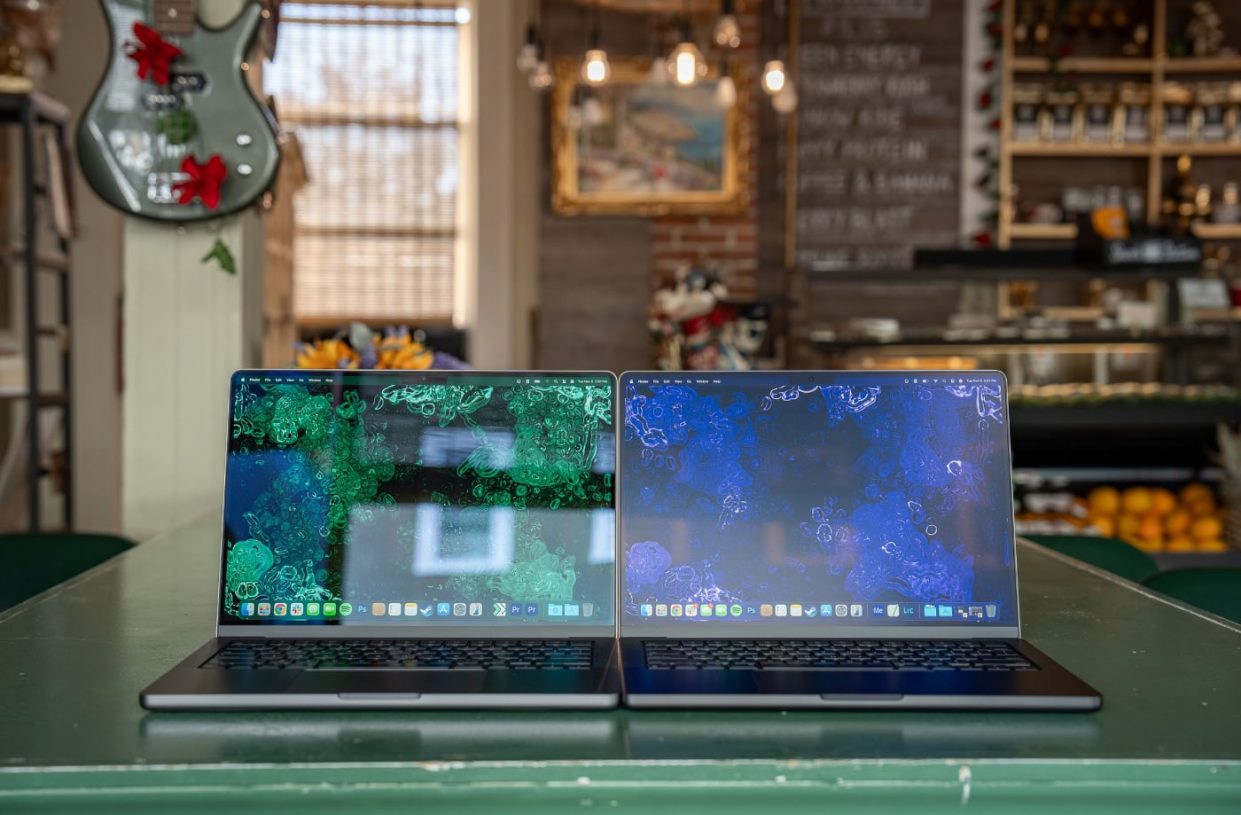
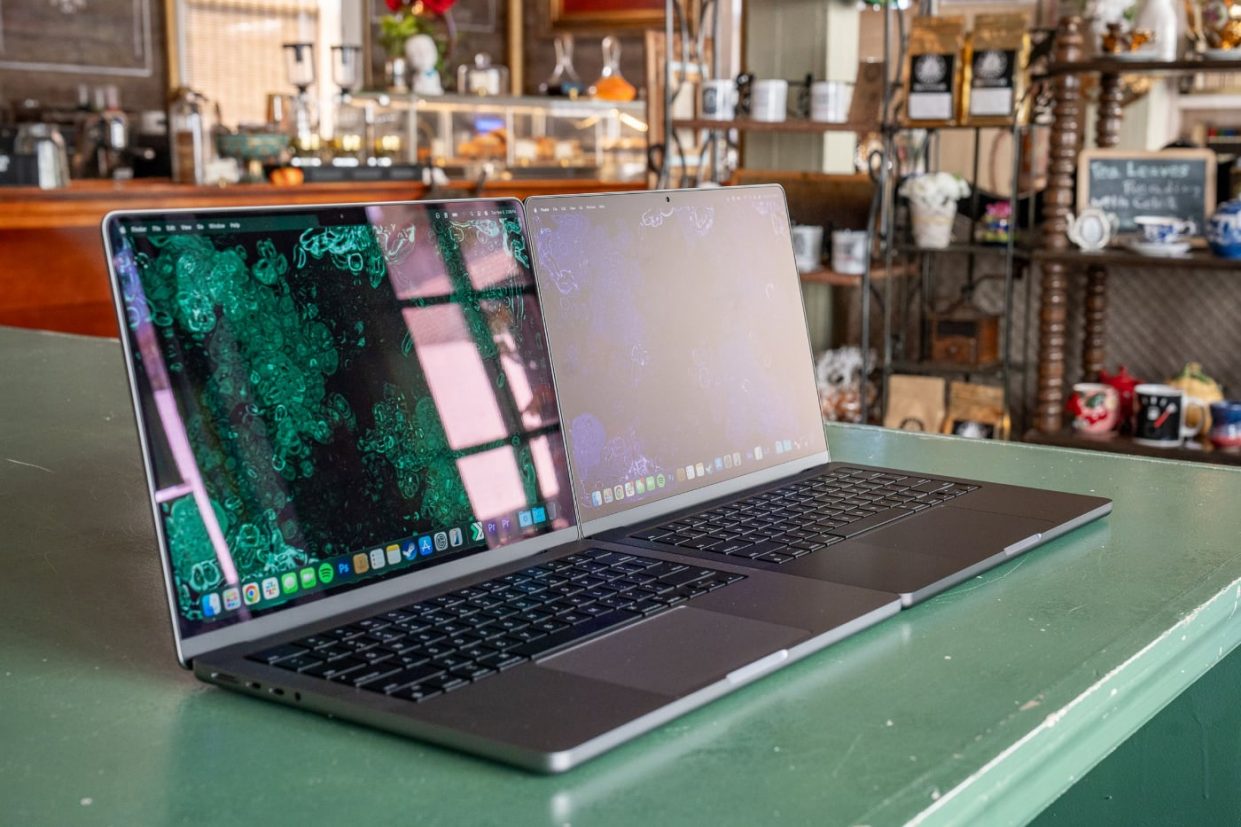
On the left is a MacBook Pro M3 with a regular screen, on the right is a MacBook Pro M4 with a nano-textured display
When editing photos, I found the MacBook Pro with M4 to be snappier than my Mac mini with M2 Pro, and its speed at displaying and processing 33-megapixel RAW files at full resolution was a pleasant surprise. I found it to be faster even when working with my usual bloated Lightroom catalog, which is stored on an external SSD.
As for editing on a nanotexture display, I know glossy screens have a little deeper contrast, but I like not having to worry about glare. I don’t exclusively edit in a dark room, and I enjoy the flexibility of working in places with less-than-ideal lighting conditions. The convenience of nanotexture far outweighs any minor technical benefits of a glossy display.
MacBook I would buy
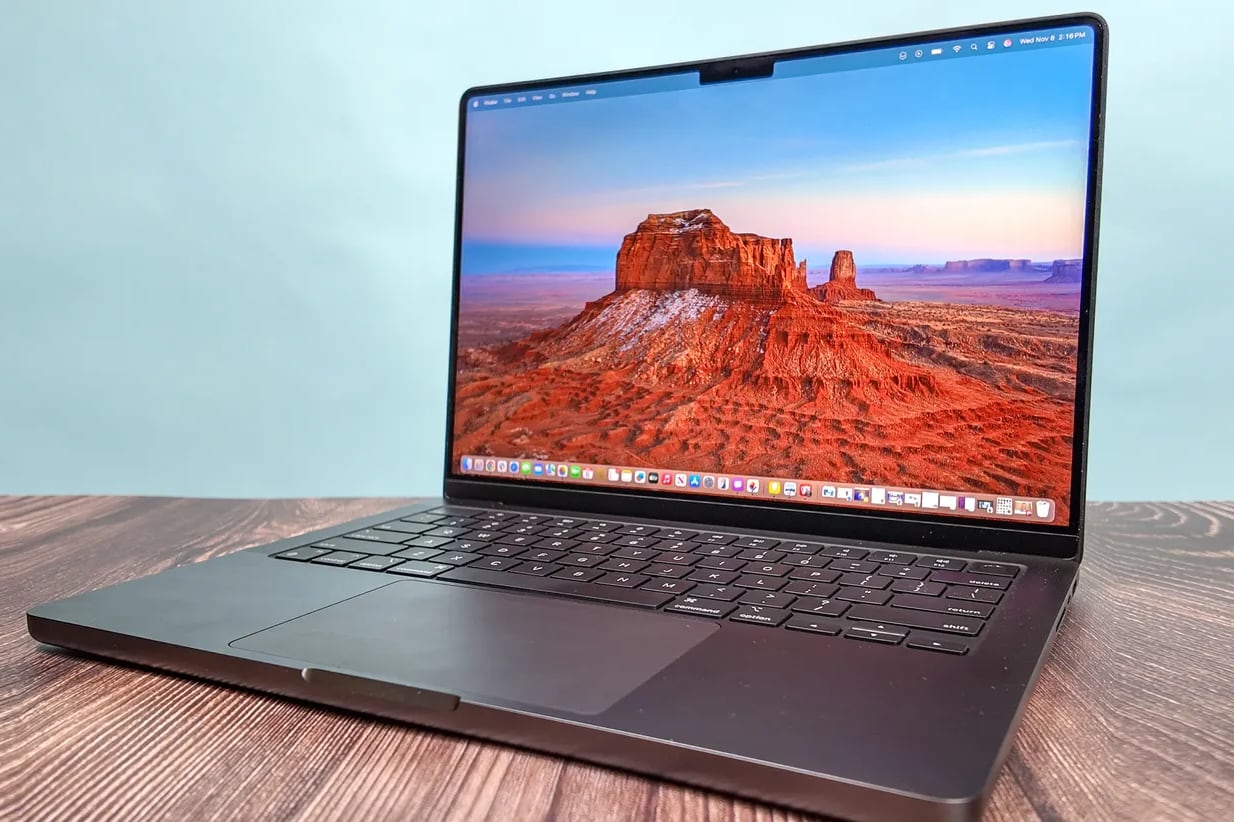
I don’t want to exaggerate, but after using the M4-equipped MacBook Pro, the new nanotexture display was a revelation.
When I placed the MacBook Pro M4 next to the MacBook Pro M1 Pro, the difference was clear as day and night. When watching the trailer for Captain America: Brave New World, I noticed that the red of Sam’s shield was a little more vibrant on the glossy old MacBook Pro, but overall the image was significantly brighter and with wider viewing angles on the new MacBook Pro with M4.
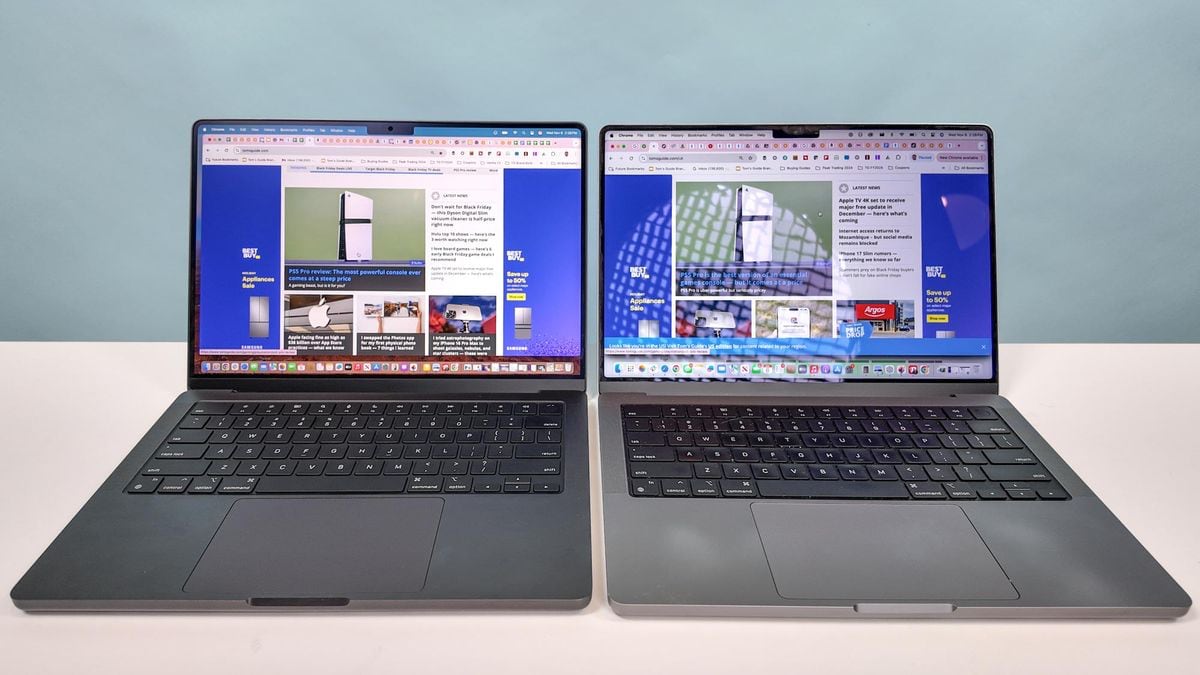
On the left is a MacBook Pro M4 with a nano-textured screen, on the right is a MacBook Pro M1 Pro with a regular display.
I also tried editing some articles outside in direct sunlight and didn’t notice any glare.
In our lab tests, the MacBook Pro with M4 achieved an impressive 1,527 nits of brightness when displaying HDR content and 556 nits with SDR. This surpasses all closest competitorssome of which don’t even support HDR.
The new MacBook Pro now features a 12-megapixel Center Stage camera. I noticed a huge difference in image quality when I took a few selfies using the Photo Booth app.


Center Stage support means you’ll stay in the center of the frame even if you move around during video calls, which can come in handy during presentations.
The M4 chip inside the new MacBook Pro offers all sorts of promised performance boosts. I had dozens of Chrome tabs open, multiple Slack chats open, and could easily perform complex ML Enhance edits in Pixelmator Pro without experiencing any lag. Everything just feels super smooth with this laptop, especially compared to my old MacBook Pro with M1 Pro.
Overall, the MacBook Pro with M4 is the laptop I would buy for my money. And this is one of the best laptops you can buy.
Get ready for M4 speed

I wasn’t expecting much from the new MacBook Pros, especially since the previous M3 models were already quite impressive. But Apple managed to surprise me again.
The M4 chip in the 14-inch MacBook Pro performed well, but the M4 Pro in the 16-inch model was a striking improvement over its predecessor. It’s faster than any other computer we’ve tested this year.
In terms of gaming, the 16-inch MacBook Pro with M4 Pro was able to achieve 60 FPS in Lies of P, Resident Evil 4 and Myst at 1440p resolution and maximum graphics settings. It was possible to enable 4K, but then the frame rate dropped to 30 FPS. Meanwhile, the 14-inch MacBook Pro M4 managed the same games at 60 FPS, but at 1080p.
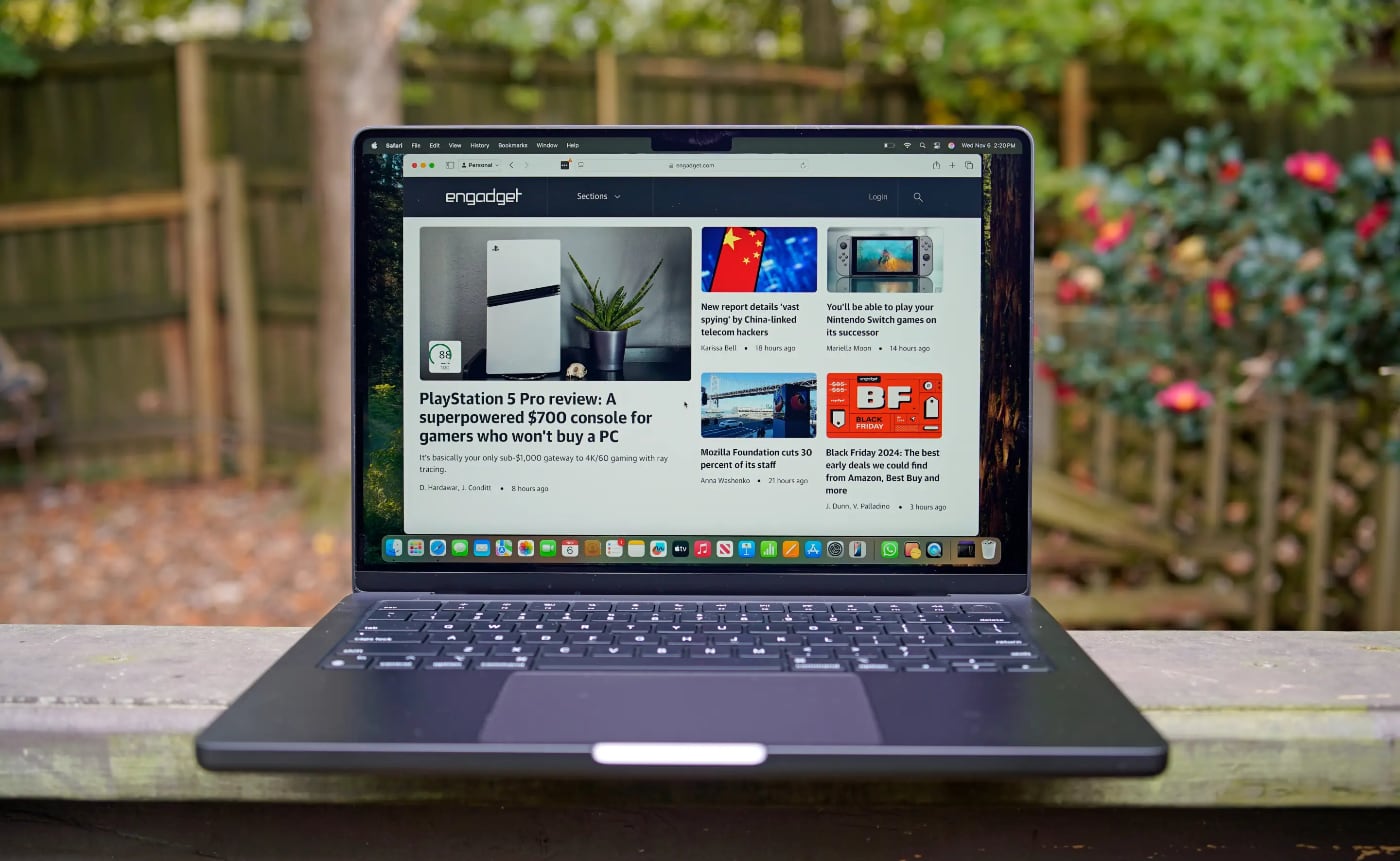
To test the Neural Engine, I used the Whisper Transcription app to transcribe a 1 hour and 9 minute podcast. The MacBook Pro with M4 did it in 3 minutes 2 seconds, the M4 Pro took 2 minutes 11 seconds, and the MacBook Pro with M3 did it in 3 minutes 37 seconds.
Both MacBook Pros also continue to deliver excellent battery life. The 14-inch MacBook Pro with M4 lasted 34 hours and 15 minutes when playing HD video, while the 16-inch MacBook Pro with M4 Pro lasted 30 hours and 16 minutes. This is the first time we’ve seen our video viewing test exceed 30 hours. In real conditions, both laptops worked for me for two days without recharging.
There’s no doubt that these new MacBook Pros are very attractive, especially if you want the power of the M4 Pro (or perhaps the M4 Max). If you have a MacBook Pro M1 or are still using an Intel model, you will definitely see a noticeable performance boost. But if you have a MacBook Pro M2 or M3, then the M4 won’t be a quantum leap for you.
Source: www.iphones.ru


